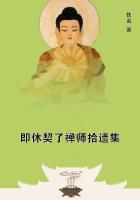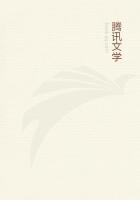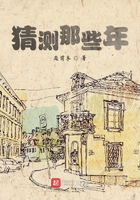The unfortunate Etienne Dolet, perhaps the only publisher who was ever burned, used an ominous device, a trunk of a tree, with the axe struck into it. In publishing 'Les Marguerites de la Marguerite des Princesses, tres illustre Royne de Navarre,' Jean de Tournes employed a pretty allegorical device. Love, with the bandage thrust back from his eyes, and with the bow and arrows in his hand, has flown up to the sun, which he seems to touch; like Prometheus in the myth when he stole the fire, a shower of flowers and flames falls around him. Groueleau, of Paris, had for motto Nul ne s'y frotte, with the thistle for badge. These are beautifully combined in the title-page of his version of Apuleius, 'L'Amour de Cupido et de Psyche' (Paris, 1557). There is probably no better date for frontispieces, both for ingenuity of device and for elegance of arrangement of title, than the years between 1530 and 1560. By 1562, when the first edition of the famous Fifth Book of Rabelais was published, the printers appear to have thought devices wasted on popular books, and the title of the Master's posthumous chapters is printed quite simply.
In 1532-35 there was a more adventurous taste--witness the title of 'Gargantua.' This beautiful title decorates the first known edition, with a date of the First Book of Rabelais. It was sold, most appropriately, devant nostre Dame de Confort. Why should so glorious a relic of the Master have been carried out of England, at the Sunderland sale? All the early titles of Francois Juste's Lyons editions of Rabelais are on this model. By 1542 he dropped the framework of architectural design. By 1565 Richard Breton, in Paris, was printing Rabelais with a frontispiece of a classical dame holding a heart to the sun, a figure which is almost in the taste of Stothard, or Flaxman.
The taste for vignettes, engraved on copper, not on wood, was revived under the Elzevirs. Their pretty little title-pages are not so well known but that we offer examples. In the essay on the Elzevirs in this volume will be found a copy of the vignette of the 'Imitatio Christi,' and of 'Le Pastissier Francois' a reproduction is given here (pp. 114, 115). The artists they employed had plenty of fancy, not backed by very profound skill in design.
In the same genre as the big-wigged classicism of the Elzevir vignettes, in an age when Louis XIV. and Moliere (in tragedy) wore laurel wreaths over vast perruques, are the early frontispieces of Moliere's own collected works. Probably the most interesting of all French title-pages are those drawn by Chauveau for the two volumes 'Les Oeuvres de M. de Moliere,' published in 1666 by Guillaume de Luynes. The first shows Moliere in two characters, as Mascarille, and as Sganarelle, in 'Le Cocu Imaginaire.' Contrast the full-blown jollity of the fourbum imperator, in his hat, and feather, and wig, and vast canons, and tremendous shoe-tie, with the lean melancholy of jealous Sganarelle. These are two notable aspects of the genius of the great comedian. The apes below are the supporters of his scutcheon.
The second volume shows the Muse of Comedy crowning Mlle. de Moliere (Armande Bejart) in the dress of Agnes, while her husband is in the costume, apparently, of Tartuffe, or of Sganarelle in 'L'Ecole des Femmes.' 'Tartuffe' had not yet been licensed for a public stage.
The interest of the portraits and costumes makes these title-pages precious, they are historical documents rather than mere curiosities.
These title-pages of Moliere are the highwater mark of French taste in this branch of decoration. In the old quarto first editions of Corneille's early plays, such as 'Le Cid' (Paris 1637), the printers used lax and sprawling combinations of flowers and fruit. These, a little better executed, were the staple of Ribou, de Luynes, Quinet, and the other Parisian booksellers who, one after another, failed to satisfy Moliere as publishers.
The basket of fruits on the title-page of 'Iphigenie,' par M. Racine (Barbin, Paris, 1675), is almost, but not quite, identical with the similar ornament of De Vise's 'La Cocue Imaginaire' (Ribou, Paris 1662). Many of Moliere's plays appearing first, separately, in small octavo, were adorned with frontispieces, illustrative of some scene in the comedy. Thus, in the 'Misanthrope' (Rihou 1667) we see Alceste, green ribbons and all, discoursing with Philinte, or perhaps listening to the famous sonnet of Oronte; it is not easy to be quite certain, but the expression of Alceste's face looks rather as if he were being baited with a sonnet. From the close of the seventeenth century onwards, the taste for title-pages declined, except when Moreau or Gravelot drew vignettes on copper, with abundance of cupids and nymphs. These were designed for very luxurious and expensive books; for others, men contented themselves with a bald simplicity, which has prevailed till our own time. In recent years the employment of publishers' devices has been less unusual and more agreeable. Thus Poulet Malassis had his armes parlantes, a chicken very uncomfortably perched on a rail. In England we have the cipher and bees of Messrs. Macmillan, the Trees of Life and Knowledge of Messrs. Kegan Paul and Trench, the Ship, which was the sign of Messrs. Longman's early place of business, and doubtless other symbols, all capable of being quaintly treated in a title-page.















